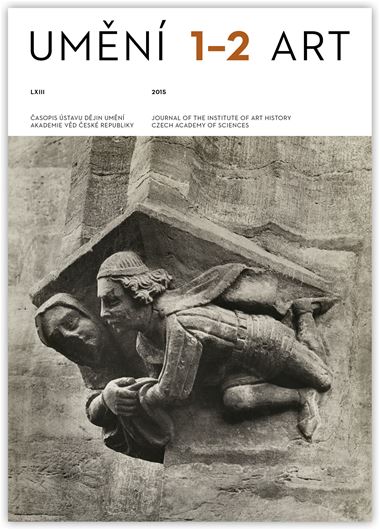Ivo Hlobil
Challenge and Risk: The Parlerian Statues on the Old Town Tower of Charles Bridge. A Reinterpretation
Ideas as to the approximate period in which the Old Town Bridge Tower decoration first arose fluctuate around the time of the death of Charles IV (1378). The importance of this sculptural decoration has been studied by Karel Stejskal, Rudolf Chadraba, Jaromír Homolka, Ivo Kořán and finally Jakub Vítovský. This article briefly recapitulates the conclusions drawn by these historians. The interpretation of the remarkable collection of monumental Parlerian sculptures is a great challenge for scholars, and brings with it considerable risk of erroneous conclusions and fabulations. The author of this article has added his own ideas to this reinterpretation. He notes that the established naming of the ‘western’ and ‘eastern’ frontages of the Old Town Bridge Tower are useful for orientation purposes, but that from a historical perspective they are not adequate. The author considers that from an analytically it is more suitable to call the western frontage ‘Old Town’ and the eastern frontage ‘imperial or royal’. He explains the presence of the lion above the statues of Charles IV and Wenceslas IV as a symbol of their eternal life. He goes on to draw attention to the largely overlooked report by V. F. Welleba from 1827 that proves beyond doubt the existence of the St Wenceslas column in front of the tower frontage. This has consequences for the interpretation of the sculptural decoration of the tower. The ‘Daphne type’ of noble Parlerian mask of a young girl with a vegetal wreath, famous from its typologically similar corbel in the Schnütgen Museum in Köln, has an older Bohemian precedent in one of the two figural corbels of the south portal of Týn Church (after 1350), among the figuratively decorated corbels beneath the archway in the ambit of the Cistercian nuns of Moravia in Old Brno (after 1323) and in Vratislav in Silesia. In these cases, the figurative ‘Daphne type’ corbels occur in pairs with male masks with similar vegetal decorations. Given the interpretation of the Köln corbel as the ‘first mother Eve’, these male masks could represent ‘the first father Adam’. Nevertheless, understandably there are no statues of the Virgin Mary standing on the Bohemian, Moravian and Silesian ‘Daphne type’ vaulting corbels – the critical argument for interpreting the Köln corbel as a representation of the ‘first mother Eve’. The correct interpretation of the figural masks thus remains open, as do many other questions surrounding the sculptural decoration of the Old Town Bridge Tower.
Full-text in the Digital Library of the Czech Academy of Sciences:
https://kramerius.lib.cas.cz/uuid/uuid:d64919b1-2de6-44d1-b96d-81ca2d703360
< back

